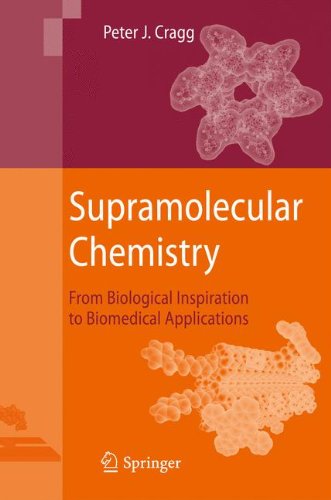

Most ebook files are in PDF format, so you can easily read them using various software such as Foxit Reader or directly on the Google Chrome browser.
Some ebook files are released by publishers in other formats such as .awz, .mobi, .epub, .fb2, etc. You may need to install specific software to read these formats on mobile/PC, such as Calibre.
Please read the tutorial at this link: https://ebookbell.com/faq
We offer FREE conversion to the popular formats you request; however, this may take some time. Therefore, right after payment, please email us, and we will try to provide the service as quickly as possible.
For some exceptional file formats or broken links (if any), please refrain from opening any disputes. Instead, email us first, and we will try to assist within a maximum of 6 hours.
EbookBell Team

4.0
86 reviewsSupramolecular chemistry is often described as the study of chemistry beyond the simple molecular level yet it is often forgotten how many of the pioneering su-pramolecular chemists looked to molecular biology for their ideas. The search for an aldolase enzyme mimic, the discovery of crown ethers that transported potas-sium as efficiently as valinomycin, and the synthesis of an antitubercular com-pound that resembled a transmembrane protein, all point to a biological inspira-tion. Since the field emerged in the last quarter of the 20th Century, advances in the synthesis of multifunctional molecules, coupled to a greater understanding of biological processes at the molecular level, have led supramolecular chemists to design compounds that not only mimic those in Nature but also have diagnostic and therapeutic applications.
The book opens with an overview of supramolecular chemistry. In subsequent chapters parallels are drawn with biological phenomena: the formation of proteins and other biomolecules, the evolution of cells, and the design of channel-forming molecules and enzymes. The application of supramolecular principles to sensors and magic bullet therapies is explained and the future of supramolecular therapeutics is considered. The exciting combination of supramolecular chemistry and nanotechnology is discussed together with the likelihood that nanoengineered smart materials could one day circulate in the body to treat patients before they became aware of any symptoms.
Supramolecular Chemistry: From Biological Inspiration to Biomedical Applications is aimed at postgraduates working at the chemistry/life science interface and final year undergraduate advanced options in supramolecular chemistry. It is hoped that it will also be of value to academics and professionals interested in the relevance of supramolecular chemistry to biology and vice versa.